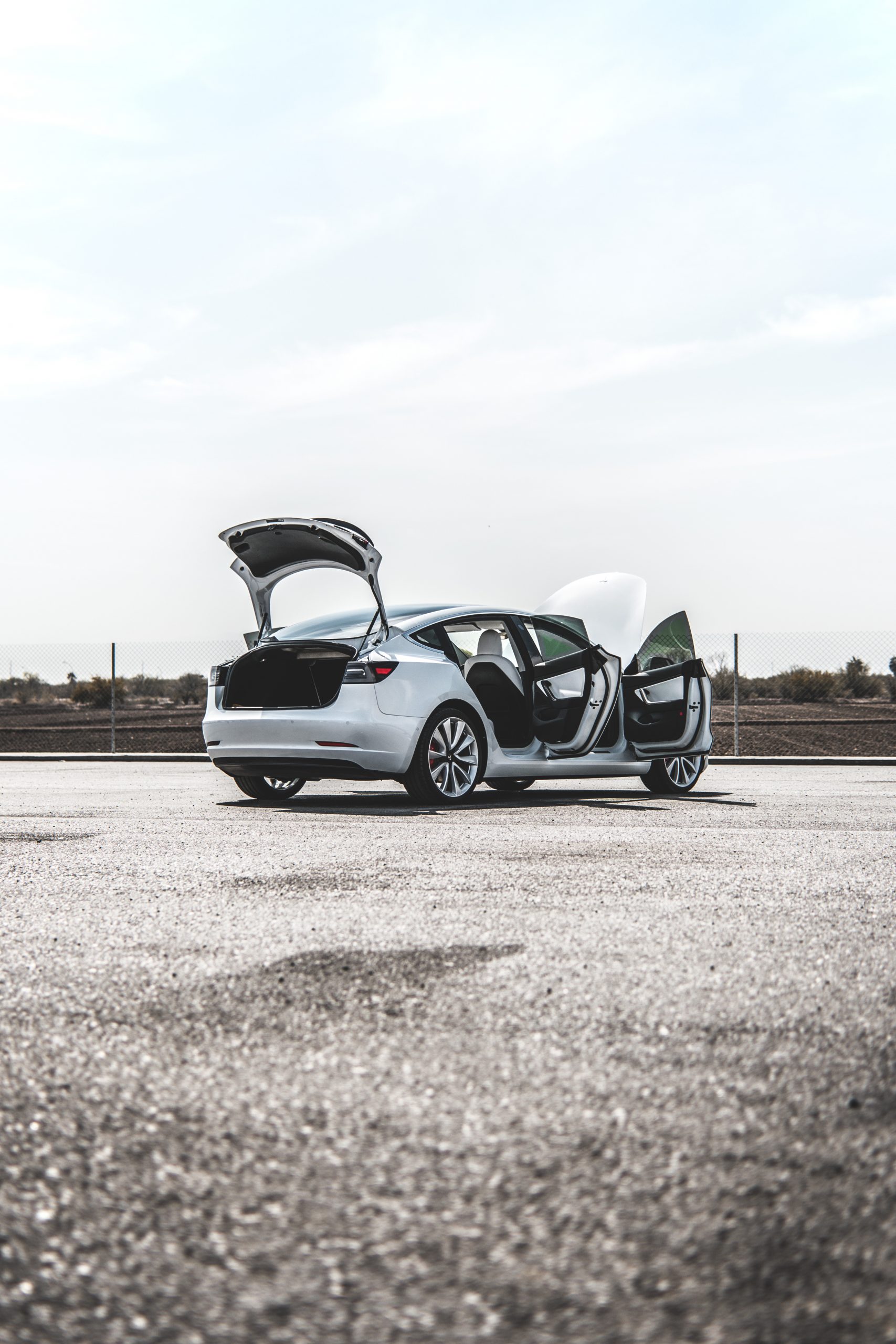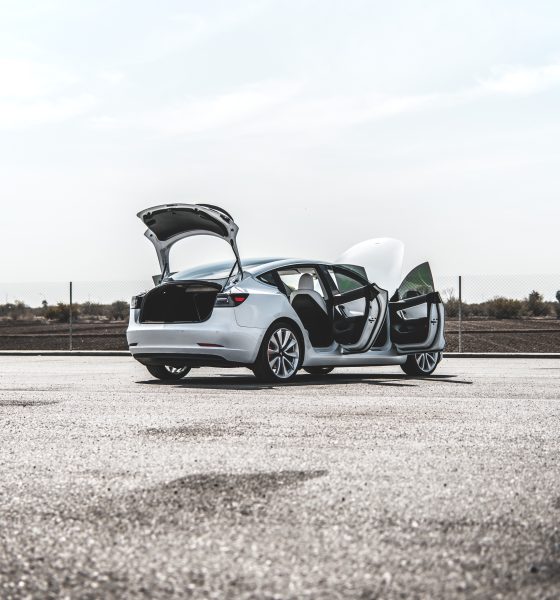There are times when small gestures could mean the difference between a company that cares and a company that simply treats its customers as numbers on a balance sheet. Just recently, Tesla proved that it is an example of the former, with CEO Elon Musk notifying a wheelchair bound Model 3 customer that the electric car maker will be installing a power liftgate on his all electric sedan — and the upgrade will be on the house.
The story of the Model 3 customer, which was related through a letter, was shared by the Tesla China Twitter account. Writing to the company, the customer noted that the Model 3 had been his dream car since April 2016, when he placed a reservation for the all electric sedan. Unfortunately, tragedy struck in 2018 when he met an accident, resulting in a spinal injury.
After the accident, the Model 3 customer lost his ability to use his legs. Confined to a wheelchair and with his dream car seemingly out of his grasp, the EV enthusiast opted to cancel his Model 3 order. His dream to own a Tesla Model 3 seemed dashed until he returned to work and learned that his wheelchair did not fully deter him from doing his job properly.
His experience at work led him to dream of regaining his ability to drive. He firmly set a goal to apply for a C5 license in China, which is used by individuals with special needs. The Model 3 owner successfully received his C5 license in 2019, and when it was time to look for a vehicle, he immediately gravitated towards Tesla’s midsize sedan.
Unfortunately, the imported Model 3 was out of his price range then. The Tesla fan decided to get BYD Qin ProDM instead, since it was affordable and it also had a feature like Smart Summon. In the long run, though, BYD’s Smart Summon-like feature could not handle certain slopes, which proved inconvenient. And thus, the idea of revisiting the Model 3 was in order.
Fortunately, Gigafactory Shanghai had started producing the MIC Model 3 at the time, and it was available for a reasonable price. The Tesla enthusiast did not hesitate this time around. He pulled the trigger on a Long Range RWD variant of the locally made sedan. His vehicle will have basic Autopilot, which should help make driving easier. However, he opted to not order the Full Self Driving suite, at least for now, or at least until a good payment scheme is available.
With his order now on the way, the Model 3 customer asked the electric car maker if it could make features like Smart Summon standard in its vehicles in the future. Such features, after all, may seem like party tricks to the layman, but they are life changing for individuals with mobility issues. The Tesla enthusiast also asked if Tesla could install a power liftgate for the frunk and trunk of the Model 3, since closing the frunk and trunk are very difficult for wheelchair bound individuals.
Interestingly enough, Elon Musk responded to the Model 3 customer’s request, stating that Tesla would be adding a power liftgate at no additional cost. It’s a relatively small gesture, but it shows a degree of empathy that’s quite rare among carmakers today. The upgrade will cost Tesla a bit more to produce the vehicle, after all, but it would mean a big difference for the Model 3 customer.
Elon Musk is no stranger to goodwill gestures to Tesla customers. Back in 2017, for example, Musk offered to fix the damages on a Model S for free after its owner used the vehicle to save a fellow driver on the road. During the incident, the Model S owner noticed that another driver was slumped over the steering wheel. Responding quickly, the Tesla owner used his Model S to stop the other vehicle. Once the two cars were stopped, the Tesla driver proceeded to administer first aid. The CEO lauded the actions of the driver, later stating that Tesla will be providing all repair costs free of charge.

News
Tesla FSD fleet is nearing 7 billion total miles, including 2.5 billion city miles
As can be seen on Tesla’s official FSD webpage, vehicles equipped with the system have now navigated over 6.99 billion miles.

Tesla’s Full Self-Driving (Supervised) fleet is closing in on almost 7 billion total miles driven, as per data posted by the company on its official FSD webpage.
These figures hint at the massive scale of data fueling Tesla’s rapid FSD improvements, which have been quite notable as of late.
FSD mileage milestones
As can be seen on Tesla’s official FSD webpage, vehicles equipped with the system have now navigated over 6.99 billion miles. Tesla owner and avid FSD tester Whole Mars Catalog also shared a screenshot indicating that from the nearly 7 billion miles traveled by the FSD fleet, more than 2.5 billion miles were driven inside cities.
City miles are particularly valuable for complex urban scenarios like unprotected turns, pedestrian interactions, and traffic lights. This is also the difference-maker for FSD, as only complex solutions, such as Waymo’s self-driving taxis, operate similarly on inner-city streets. And even then, incidents such as the San Francisco blackouts have proven challenging for sensor-rich vehicles like Waymos.
Tesla’s data edge
Tesla has a number of advantages in the autonomous vehicle sector, one of which is the size of its fleet and the number of vehicles training FSD on real-world roads. Tesla’s nearly 7 billion FSD miles then allow the company to roll out updates that make its vehicles behave like they are being driven by experienced drivers, even if they are operating on their own.
So notable are Tesla’s improvements to FSD that NVIDIA Director of Robotics Jim Fan, after experiencing FSD v14, noted that the system is the first AI that passes what he described as a “Physical Turing Test.”
“Despite knowing exactly how robot learning works, I still find it magical watching the steering wheel turn by itself. First it feels surreal, next it becomes routine. Then, like the smartphone, taking it away actively hurts. This is how humanity gets rewired and glued to god-like technologies,” Fan wrote in a post on X.
News
Tesla starts showing how FSD will change lives in Europe
Local officials tested the system on narrow country roads and were impressed by FSD’s smooth, human-like driving, with some calling the service a game-changer for everyday life in areas that are far from urban centers.

Tesla has launched Europe’s first public shuttle service using Full Self-Driving (Supervised) in the rural Eifelkreis Bitburg-Prüm region of Germany, demonstrating how the technology can restore independence and mobility for people who struggle with limited transport options.
Local officials tested the system on narrow country roads and were impressed by FSD’s smooth, human-like driving, with some calling the service a game-changer for everyday life in areas that are far from urban centers.
Officials see real impact on rural residents
Arzfeld Mayor Johannes Kuhl and District Administrator Andreas Kruppert personally tested the Tesla shuttle service. This allowed them to see just how well FSD navigated winding lanes and rural roads confidently. Kruppert said, “Autonomous driving sounds like science fiction to many, but we simply see here that it works totally well in rural regions too.” Kuhl, for his part, also noted that FSD “feels like a very experienced driver.”
The pilot complements the area’s “Citizen Bus” program, which provides on-demand rides for elderly residents who can no longer drive themselves. Tesla Europe shared a video of a demonstration of the service, highlighting how FSD gives people their freedom back, even in places where public transport is not as prevalent.
What the Ministry for Economic Affairs and Transport says
Rhineland-Palatinate’s Minister Daniela Schmitt supported the project, praising the collaboration that made this “first of its kind in Europe” possible. As per the ministry, the rural rollout for the service shows FSD’s potential beyond major cities, and it delivers tangible benefits like grocery runs, doctor visits, and social connections for isolated residents.
“Reliable and flexible mobility is especially vital in rural areas. With the launch of a shuttle service using self-driving vehicles (FSD supervised) by Tesla in the Eifelkreis Bitburg-Prüm, an innovative pilot project is now getting underway that complements local community bus services. It is the first project of its kind in Europe.
“The result is a real gain for rural mobility: greater accessibility, more flexibility and tangible benefits for everyday life. A strong signal for innovation, cooperation and future-oriented mobility beyond urban centers,” the ministry wrote in a LinkedIn post.
News
Tesla China quietly posts Robotaxi-related job listing
Tesla China is currently seeking a Low Voltage Electrical Engineer to work on circuit board design for the company’s autonomous vehicles.

Tesla has posted a new job listing in Shanghai explicitly tied to its Robotaxi program, fueling speculation that the company is preparing to launch its dedicated autonomous ride-hailing service in China.
As noted in the listing, Tesla China is currently seeking a Low Voltage Electrical Engineer to work on circuit board design for the company’s autonomous vehicles.
Robotaxi-specific role
The listing, which was shared on social media platform X by industry watcher @tslaming, suggested that Tesla China is looking to fill the role urgently. The job listing itself specifically mentions that the person hired for the role will be working on the Low Voltage Hardware team, which would design the circuit boards that would serve as the nervous system of the Robotaxi.
Key tasks for the role, as indicated in the job listing, include collaboration with PCB layout, firmware, mechanical, program management, and validation teams, among other responsibilities. The role is based in Shanghai.
China Robotaxi launch
China represents a massive potential market for robotaxis, with its dense urban centers and supportive policies in select cities. Tesla has limited permission to roll out FSD in the country, though despite this, its vehicles have been hailed as among the best in the market when it comes to autonomous features. So far, at least, it appears that China supports Tesla’s FSD and Robotaxi rollout.
This was hinted at in November, when Tesla brought the Cybercab to the 8th China International Import Expo (CIIE) in Shanghai, marking the first time that the autonomous two-seater was brought to the Asia-Pacific region. The vehicle, despite not having a release date in China, received a significant amount of interest among the event’s attendees.










